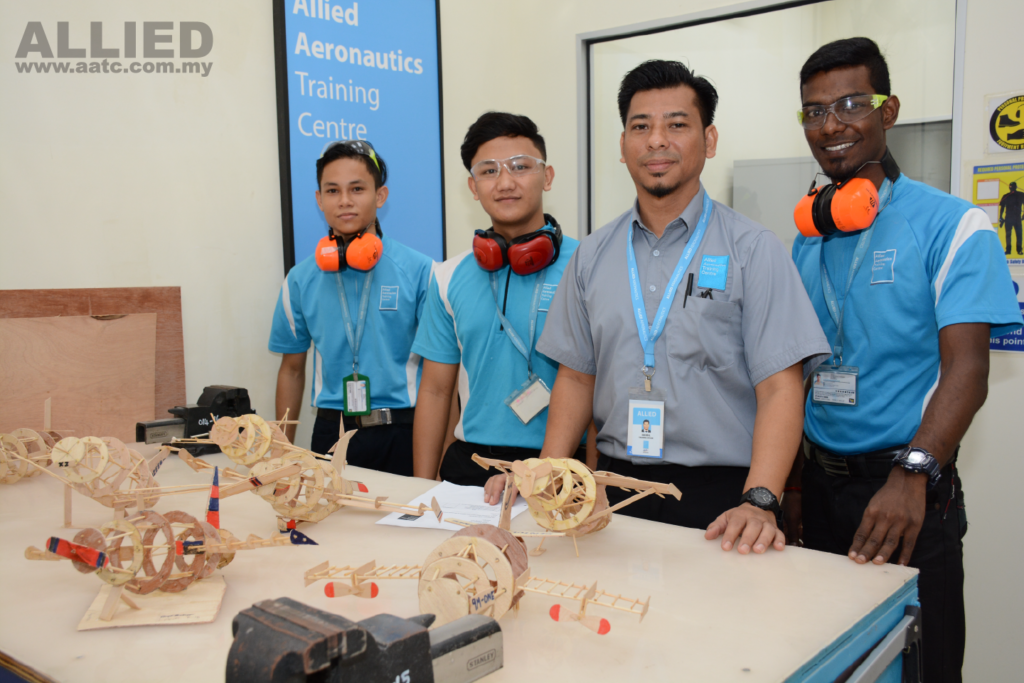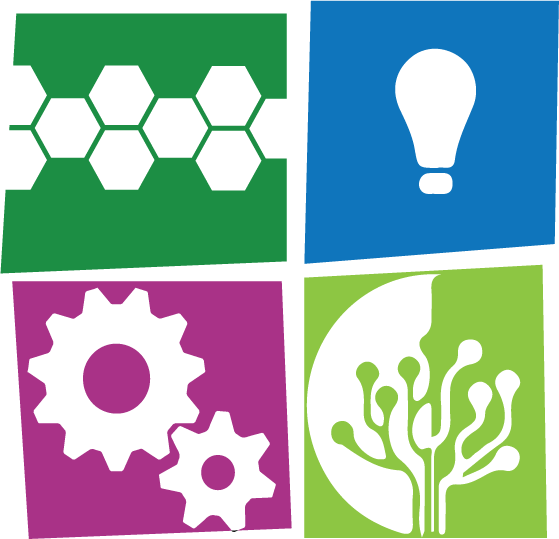 Sebahagian pelajar Allied Aeronautics Training Centre (ALLIED) yang mengikuti kursus penyelenggaraan dan pembaikpulih pesawat di bawah pemantauan Jabatan Penerbangan Awam Malaysia (DCAM).
Sebahagian pelajar Allied Aeronautics Training Centre (ALLIED) yang mengikuti kursus penyelenggaraan dan pembaikpulih pesawat di bawah pemantauan Jabatan Penerbangan Awam Malaysia (DCAM).
Transforming TVET in Malaysia: Harmonizing the Governance Structure in a Multiple Stakeholder Setting
AbstractMalaysia is in need for highly-skilled human resources to close the present demand-supply gap in various industries, particularly those driving economic transformation. The government has determined that the Technical and Vocational Education and Training (TVET) sector as the main route in providing highly-skilled human resources and also one of the key drivers of the economy for Malaysia to become a high-income nation. While this study recognizes that initiatives have been taken to continuously improve the sector through the TVET transformation programs, it is imperative that the governance issues faced by the key stakeholder are systematically addressed to ensure that the operating and delivery system can be optimized. This paper provides an overview and an analysis of the TVET transformation programs and the governance issues including several challenges to the development of the TEVT sector. A review from various published documents to the present has been used to provide a comprehensive summary of literature of Malaysia’s TVET transformation and governance issues. This study also hopes to suggest certain measures for an effective governance of the TVET sector so that the decisions and actions of multiple stakeholders towards driving the performance and quality of this sector can be harmonized.
1 Introduction
The need for strengthening TVET has been widely acknowledged in numerous countries and unions(Yazçayır & Yağcı 2009) due to technical innovation and globalization (Wilson, 2001), achieving an higher income (ANTA 2002), and thus decreasing poverty (ILO 2012). All of these concerns will lead to the transformation of TVET system to provide workforce with the competences and skills needed for a diverse and expanding market economy as well as strengthening the civil society (EGYPT 2012). In Malaysia, the quality and skills of human resources is very crucial to the success of economic transformation as well as realizing Malaysia’s vision 2020 of becoming a developed nation. According to the Economic Planning Unit (EPU), the demand for labor especially for the TVET sector is expected to increase with the introduction of National Key Economic Area (NKEA). NKEA will require a workforce of up to 3.3 million by 2020 of which 1.3 million are to be TVET graduates. The focused sectors are Tourism, Retail, Greater Kuala Lumpur Development, Healthcare, and Education. However, the current growing labor supply is at 2% per year. If the government would not take any specific initiatives on the labor supply, it would not be able to meet the demand which are estimated 350,000 shortfall of workforce by 2020. Therefore, the needs of 1.3 million skilled workforce in TVET sector would not be met. Furthermore, currently only 28% are skilled workers from an overall workforce of 12 million compared to a minimum of 40% that is targeted at by the government for the year 2020 (JPK 2012b). Therefore, TVET should be transformed to be more flexible in their capacity to anticipate and forecast skills needs so that the demand for highly skilled manpower can be achieved (MOE 2011).
1.1 Historical background of TVET in Malaysia
Technical and vocational education and training (TVET) had already been introduced in the period of pre-independence. The history of technical and vocational schools began with the establishment of a Trades School in Kuala Lumpur in 1926, aiming at the provision of trades education to the youth. In 1930, the school was expanded to Ipoh, Johor Bahru and established in Penang in 1932. Trades school is basically training the basics of carpentry, repairing machinery, electrical wiring and construction building with three years courses offered. After independence, the government started to give an enormous concern on TVET, which is expressed from the First Malaysia Plan 1965-1970 to the Tenth Malaysia Plan 2010-2015. During the First Malaysia Plan period, a number of upper-secondary vocational schools were established for the first time. The main function of the vocational schools is to supply skilled technicians, craftsmen and artisans urgently needed by the agricultural, industrial and commercial sectors in economy (JPM 1965).
The establishment of TVET institutions was not limited to vocational schools only. Other TVET institutions such as the Industrial Training Institutes (ITI), Polytechnics, MARA Vocational Institutes, National Youth Development Corps (NYDC) and the Center for Instructor and Advanced Skill Training (CIAST) have been expanded or established to provide technical and vocational education and skills training (JPM 1970; JPM 1975; JPM1985; JPM 1980). Furthermore, the increase of foreign investment through multinational companies in Malaysia resulted in the introduction of new production processes and technologies and in an increased demand of a highly competent workforce with advanced skills. In consequence two advanced skill training institutions were established in cooperation with Germany and France: the German Malaysia Institute (GMI) and Malaysia France Institute (MFI)(JPM 1995). In the 1990s, the number of students entering technical and vocational schools was increasing. Thus, in 1995, there had been some changes in the TVET system including changes in the restructuring and upgrading of 69 secondary vocational schools (SMV) to technical schools (SMT). This reform was not only restricted to the technical and vocational schools alone, but also to a number of institutions that have as well the objective to help students to get a job based on the skills acquired from technical and vocational training, which are Community Colleges, ITIs, polytechnics, and MARA Vocational Institutes (IKM).
In order to support the implementation of an enhanced quality in technical and vocational education and training, the National Industrial Training and Trade Certification Board (NITTCB) was established in 1971. The NITTCB serves as a coordinating agency among the involved government agencies and between the government and the industry. NITTCB also provides common trade standards and improved syllabi and course structures for vocational training institutions. NITTCB also evaluates the quality of training providers and training courses. It was reorganized in 1989 (JPM 1990) and renamed into National Vocational Training Council (NVTC), but its objectives with respect to quality remained. In 2006, with the new enactment of National Skills Development Act (NASDA) 652, NVTC was restructured to become the Department of Skills Development (DSD) under the Ministry of Human Resources (MoHR) with the responsibilities
- to develop and continuously revise training standards, skills training and the certification system,
- to promote skills training and
- to coordinate strategies and skills training programs.
At present, DSD has accredited 1,068 skills training centers, with 101,450 certificates being awarded in the year 2012 including diploma and advanced diploma (JPK 2012a).
For the training purposes, there was a standard that has been used, known as National Trade Skill Standard (NTSS). The NTSS was developed by NITTCB in close cooperation with the industry in 1976 to provide skilled manpower to suit the needs of skilled manpower. Student who achieved the competencies required in the NTSS will be awarded National Trades Certificate (NTC). Technological development and economic changes have required the existing standard to be revised. In 1993, the NTSS was replaced by the National Occupational Skills Standard (NOSS), resulted an introduction to a new certification scheme known as Malaysia Skills Certificate (MSC) (Othman 2003; JPM1995). The new system gave recognition to skills acquired through training and job experience. To improve the quality of skills training, the government through DSD embarked on the NOSS development with the new format in 2005. In 2012, about 1,439 NOSS has been developed based on the occupational analysis done by DSD. It also covers 20 skills sectors in the TVET (JPK 2012a). Subsequently, in July 2005, the National Dual Training System (NDTS) was introduced as an alternative system to strengthen the training delivery (JPM 2000; JPM 2005). The German-based system which is an industry driven concept will ensure the training provided is in line with the industry requirements. The main characteristic of the NDTS is the cooperation between training institutions and private companies such as Mercedes, Toyota, Tesco and so on. The training was carried out 70%-80% at the industry and 20%-30% at the training institutions. It referred to the National Occupational Core Curricula (NOCC) as a foundation which was different from the NOSS. In the year 2012, about 138 companies were involved in NDTS (JPK 2012a).
Today, the government continuously formulates, promotes and coordinates TVET strategies and programs which are in line with Malaysia’s economic, technological and societal needs. In the 10th Malaysia Plan 2010-2015, TVET has been chosen as a key component to achieve the country’s goal as a high-income nation by the year 2020 (JPM 2010). This is to make sure that there is a constant, adequate and timely supply of multi-skilled workers that will able to meet the country’s development. Great emphasis on improving the quality of education and skills-based training, increase awareness as well as improving the perception of TVET and strengthen the collaboration with industries for the better recognition were among the further steps to be taken. Nevertheless, these transformation and endeavors wasn’t enough to converse how TVET could be reformed to a better system, particularly if the country needs to compete at the international level in today’s era of globalization. Most importantly, the governance of the TVET system should be strengthened and well aligned with the country’s vision. Based on that, this article will provide a review on the TVET transformation program within several ministries and some issues and constraints regarding the governance in TVET system. The constraints that exist in the governance are very important to be acknowledged so that a comprehensive actions could be considered in improving the quality of the governance system.
